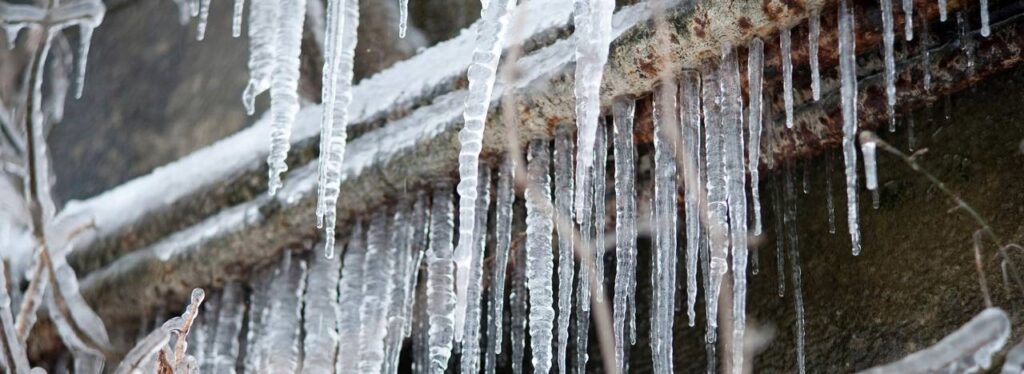This article down the page involving Preventing and dealing with frozen pipes is highly engaging. Check it out yourself and see what you think of it.

Cold weather can wreak havoc on your plumbing, especially by freezing pipelines. Below's how to avoid it from taking place and what to do if it does.
Introduction
As temperatures drop, the danger of frozen pipelines boosts, potentially causing pricey repair work and water damage. Comprehending just how to avoid icy pipelines is important for house owners in cool climates.
Avoidance Tips
Shielding vulnerable pipelines
Cover pipes in insulation sleeves or utilize warmth tape to protect them from freezing temperatures. Concentrate on pipelines in unheated or outside locations of the home.
Home heating strategies
Keep indoor areas appropriately warmed, especially areas with pipes. Open up cabinet doors to enable cozy air to circulate around pipelines under sinks.
Just how to identify icy pipes
Try to find lowered water circulation from taps, unusual odors or sounds from pipelines, and noticeable frost on subjected pipes.
Long-Term Solutions
Architectural changes
Think about rerouting pipelines far from outside walls or unheated areas. Add additional insulation to attic rooms, cellars, and crawl spaces.
Updating insulation
Buy top quality insulation for pipes, attics, and walls. Proper insulation aids preserve constant temperatures and reduces the threat of frozen pipes.
Shielding Outside Plumbing
Yard hose pipes and outside faucets
Separate and drain yard pipes before wintertime. Install frost-proof faucets or cover outside taps with protected caps.
Comprehending Icy Pipes
What triggers pipelines to ice up?
Pipelines freeze when subjected to temperature levels listed below 32 ° F (0 ° C) for extended durations. As water inside the pipes freezes, it expands, putting pressure on the pipe wall surfaces and possibly creating them to break.
Dangers and problems
Icy pipelines can result in water disturbances, residential property damages, and expensive repairs. Burst pipelines can flooding homes and create substantial structural damage.
Signs of Frozen Pipes
Recognizing icy pipes early can prevent them from breaking.
What to Do If Your Pipelines Freeze
Immediate actions to take
If you suspect icy pipes, keep faucets open up to eliminate pressure as the ice thaws. Utilize a hairdryer or towels soaked in warm water to thaw pipes gradually.
Conclusion
Avoiding icy pipes calls for proactive actions and quick feedbacks. By comprehending the reasons, signs, and safety nets, homeowners can safeguard their plumbing during winter.
6 Proven Ways to Prevent Frozen Pipes and Protect Your Home
Disconnect and Drain Garden Hoses
Before winter arrives, start by disconnecting your garden hoses and draining any remaining water. Close the shut-off valves that supply outdoor hose bibs and leave the outdoor faucet open to allow any residual water to drain. For extra protection, consider using faucet covers throughout the colder months. It’s also important to drain water from any sprinkler supply lines following the manufacturer’s directions.
Insulate Exposed Pipes
Insulating your pipes is an effective way to prevent freezing. Pipe insulation is readily available at home improvement stores and is relatively inexpensive. Pay close attention to pipes in unheated areas such as the attic, basement, crawl spaces, or garage. Apply foam insulation generously to create a buffer against the cold. You can also wrap your pipes in heat tape or thermostat-controlled heat cables for added warmth.
Seal Air Leaks
Inspect your home for any cracks or openings that could let in cold air. Seal any holes around the piping in interior or exterior walls, as well as the sill plates where your home rests on its foundation. Additionally, make sure to keep your garage door closed unless you’re entering or exiting. Leaving it open creates a significant air leak that can lead to frozen pipes.
Allow Warm Air Circulation
During cold snaps, it’s essential to allow warm air to circulate evenly throughout your home. Leave interior doors ajar to promote better airflow. Open kitchen and bathroom cabinets to help distribute heat consistently around the rooms. If you have small children or pets, be sure to remove any household chemicals or potentially harmful cleaners from open cabinets for safety.
Let Faucets Drip
A small trickle of water can make a big difference in preventing ice formation inside your pipes. When temperatures drop significantly, start a drip of water from all faucets served by exposed pipes. This continuous flow helps prevent the water from freezing. Additionally, running a few faucets slightly can relieve pressure inside the pipes, reducing the chances of a rupture if the water inside does freeze.
https://choateshvac.com/6-proven-ways-to-prevent-frozen-pipes-and-protect-your-home/

Do you really like reading about How to Prevent Your Pipes From Freezing? Place feedback below. We will be delighted to hear your opinion about this posting. We hope that you come back again in the future. Sharing is good. One never knows, you may very well be helping someone out. I am grateful for your time. Don't forget to check up our blog back soon.
Phone